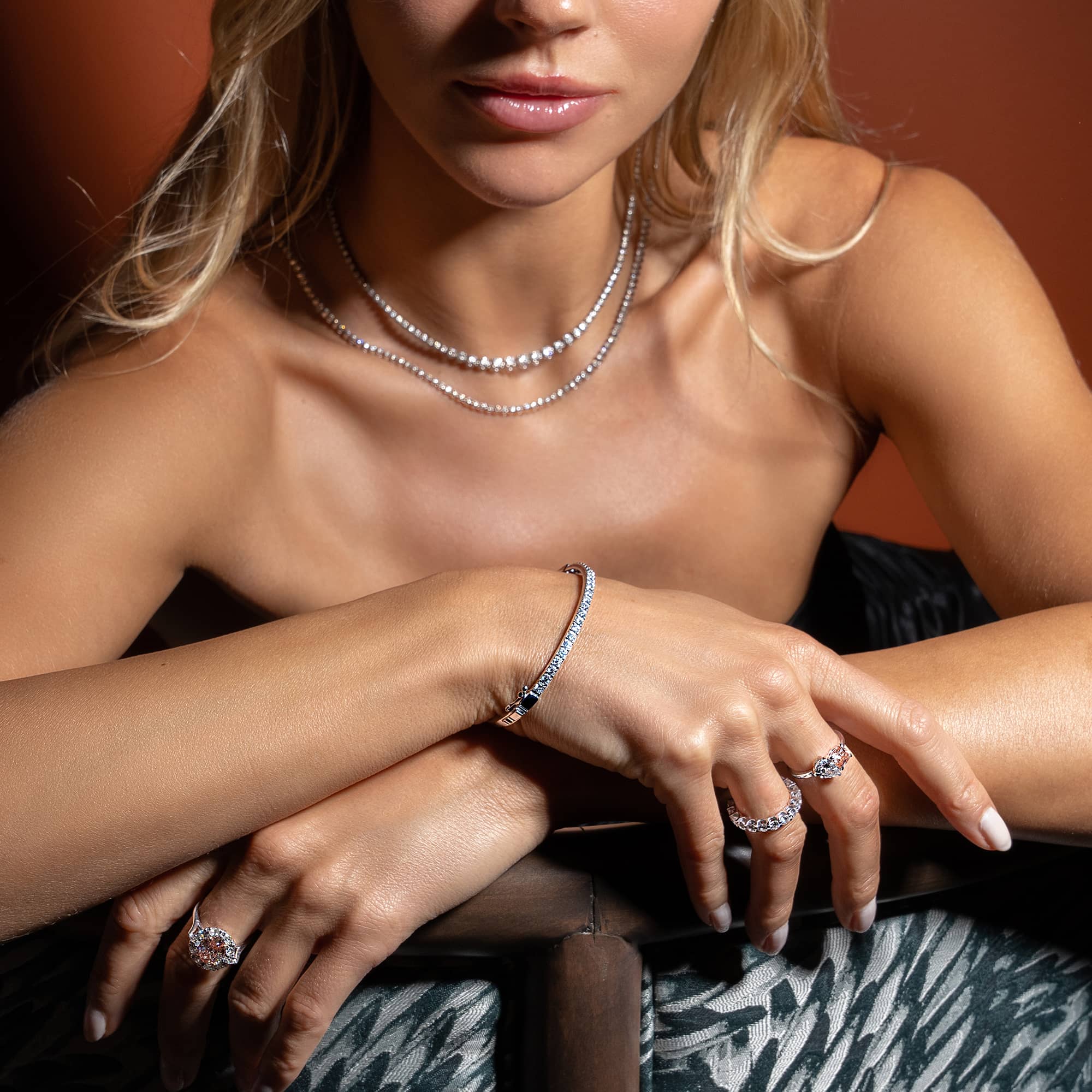How Are Cultured Diamonds Created?
Lab grown diamonds can be produced in two ways. The easier, more common way is known as the High Pressure, High Temperature (HPHT) process, and the second is the more sophisticated Chemical Vapor Deposition (CVD) process. The HPHT process places a diamond seed within a belt press and uses graphite and molten metal as a catalyst. Under extreme pressure and temperature, this crystalizes to form the rough diamond. Because of the use of various metals, HPHT diamonds are not the purest, as they are not 100% carbon.
It’s for this very reason that grwn diamonds are produced exclusively through the much cleaner CVD process. While much more complex than HPHT, CVD ensures a purer rough produced with a lower carbon footprint, that’s why we’re proud to be one of the handful of cultured diamond producers in the world specializing in this cutting-edge method.
It all begins using a thin sliver of natural diamond, which is placed within a plasma reactor. Next, various gasses are injected to replicate a diamond’s natural conditions. Under extreme pressure and heat, the atomized carbon disintegrates from the gasses and forms layers over the diamond seed—much in the same way that a mollusk layers minerals over a grain of sand to create a pearl.
The result is a pure, certified type 2A diamond—the purest certification a diamond can be.
At this point, the original natural diamond sliver can be sliced off and reused to seed more cultured diamonds. Once a grwn diamond is fully formed, it is cut and polished the traditional way—by expert craftsmen, using traditional tools to create a final one-of-a-kind stone of unmatched brilliance and perfection. Moreover, all diamonds are crafted in a hydro-powered foundry to bring you a diamond that’s not only exceptionally beautiful, but ethically and sustainably made.

FOX5 NEWS REPORTS
Grwn Diamonds released a study on the best and worst states for marriage. The study took a look at data from the CDC and the Census Bureau to help make their final decision.
COLLABORATIONS

















